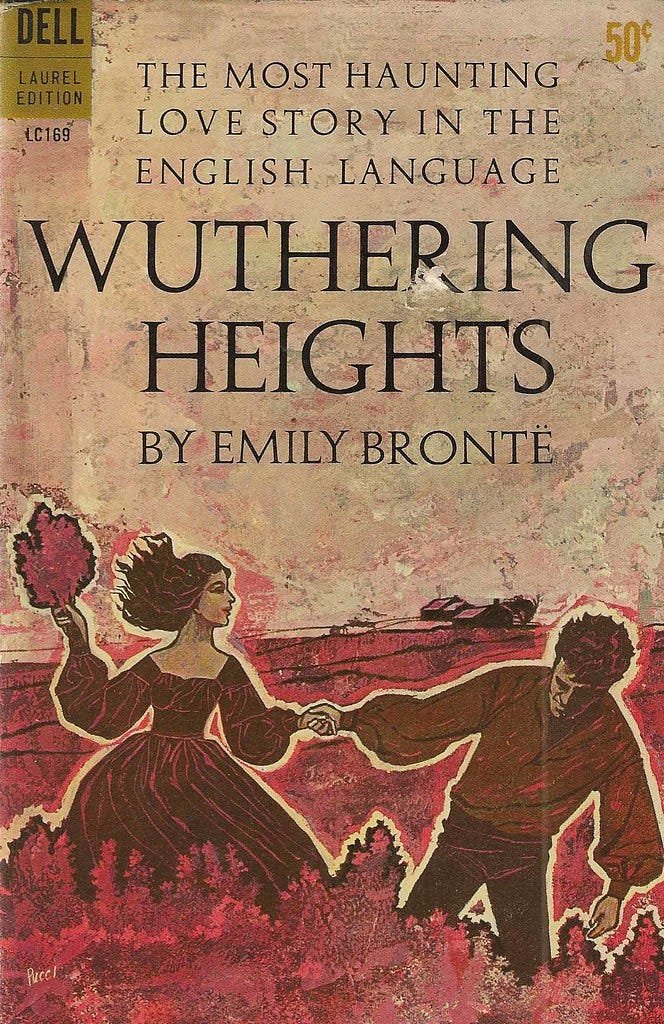Victorian Mourning Wear: A Primer on the Origins of Goth Style
The Victorian era’s elaborate mourning customs, with their somber elegance and ritualistic beauty, have left an indelible mark on the goth subculture. This one’s for you Ms. Steele!
The Victorian era, defined by its elaborate social customs, emphasized mourning practices significantly. These rituals, heavily influenced by Queen Victoria's prolonged grief for Prince Albert, left a cultural legacy that resonates deeply with the goth subculture. The Victorians' fascination with death and ability to find beauty in sorrow continue to inspire goth fashion and philosophy.
Victorian Mourning Customs
Mourning in Victorian society was a public display of grief governed by strict rules. Women followed a three-stage process:
1. Deep Mourning: Black dresses made of dull fabrics like crepe or wool were worn for over a year. Accessories were minimal, often limited to black veils or bonnets.
2. Second Mourning: Subtle embellishments like silk trims or jet jewelry were introduced after this period.
3. Half Mourning: Muted colors such as gray or lavender replaced black, and more elaborate fabrics became acceptable.
These customs extended beyond attire. Homes were draped in black crepe, mirrors were covered, and clocks were stopped at death. This all-encompassing approach to mourning created an aesthetic that balanced sorrow with dignity.

The literature of the time reflected this obsession with death. Charles Dickens, for example, satirized the performative nature of mourning in Martin Chuzzlewit, where Mr. Mould, an undertaker, exults over funeral arrangements: "We are not inferior to any establishment... in the promptitude of our arrangements; in the completeness of our equipment; or in the dignity of our performance!" This critique highlights how mourning customs could become theatrical rather than heartfelt.
The Influence on Goth Aesthetics
The goth subculture draws heavily from Victorian mourning traditions. The hallmark black clothing mirrors the somber tones of deep mourning attire. At the same time, goth fashion incorporates Victorian-inspired elements such as high collars, corsets, lace details, and long skirts.
Jewelry also plays a significant role in Victorian mourning customs and goth style. Jet beads and brooches, popular during second mourning, are echoed in modern goth accessories. Some goths even embrace memento mori practices by incorporating symbols like skulls or crosses into their jewelry.
Victorian literature further reinforces this connection. In Wuthering Heights, Emily Brontë romanticizes death through Catherine's declaration: "I cannot live without my soul; I cannot live without my life!" This yearning for connection beyond death aligns with goth culture's philosophical embrace of mortality as inevitable and beautiful.
Elegance in Darkness
Their ability to find beauty in grief sets Victorian mourning customs and Goth aesthetics apart. For Victorians, mourning attire was not just about sorrow but also about maintaining social respectability through elegance. Similarly, goth culture celebrates darkness as an artistic expression that blends melancholy with sophistication.
This romanticization of death is evident in Thomas Hardy's poem Ah, Are You Digging on My Grave?

The speaker reflects on being forgotten after death:
"Ah no; they sit and think what use / What good will planting flowers produce?". Such reflections on mortality capture the melancholic yet contemplative spirit shared by Victorians and modern goths.
A Lasting Legacy
By reinterpreting Victorian mourning practices for modern times, the goth subculture continues to honor the past while creating its own unique identity. Its fashion, art, and philosophy remind us that beauty can be found even in life's darkest moments; a sentiment deeply rooted in the rituals and literature of the Victorian era.






OMG! How did I miss this when you first posted it. I am all about mourning wear, slightly obsessed 🖤
Wuthering Heights the most haunting love story in the English language?
Hold my wine.
Let me show you my soul...judge not the tattered edges, and the thin patches, it has been worn with use.